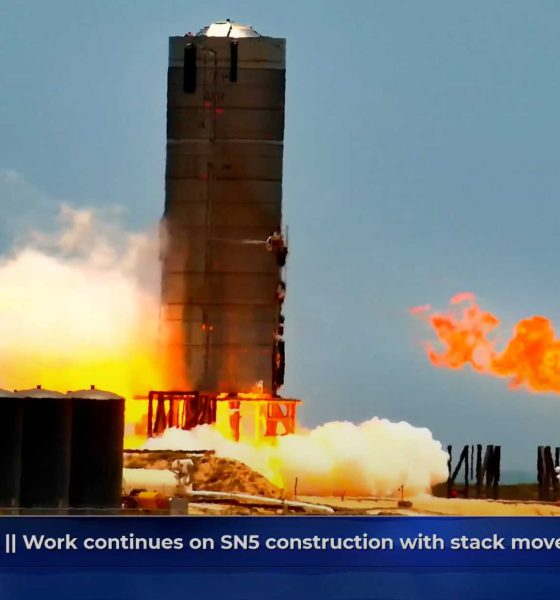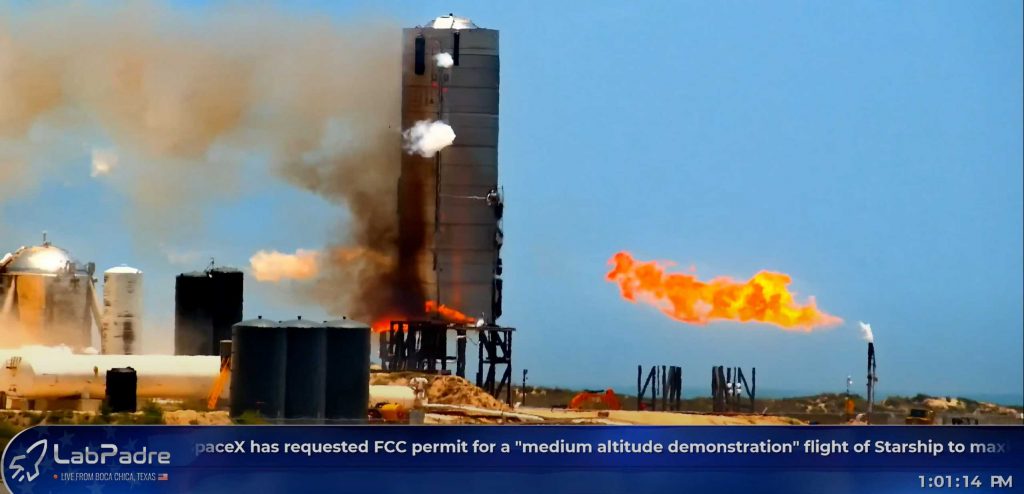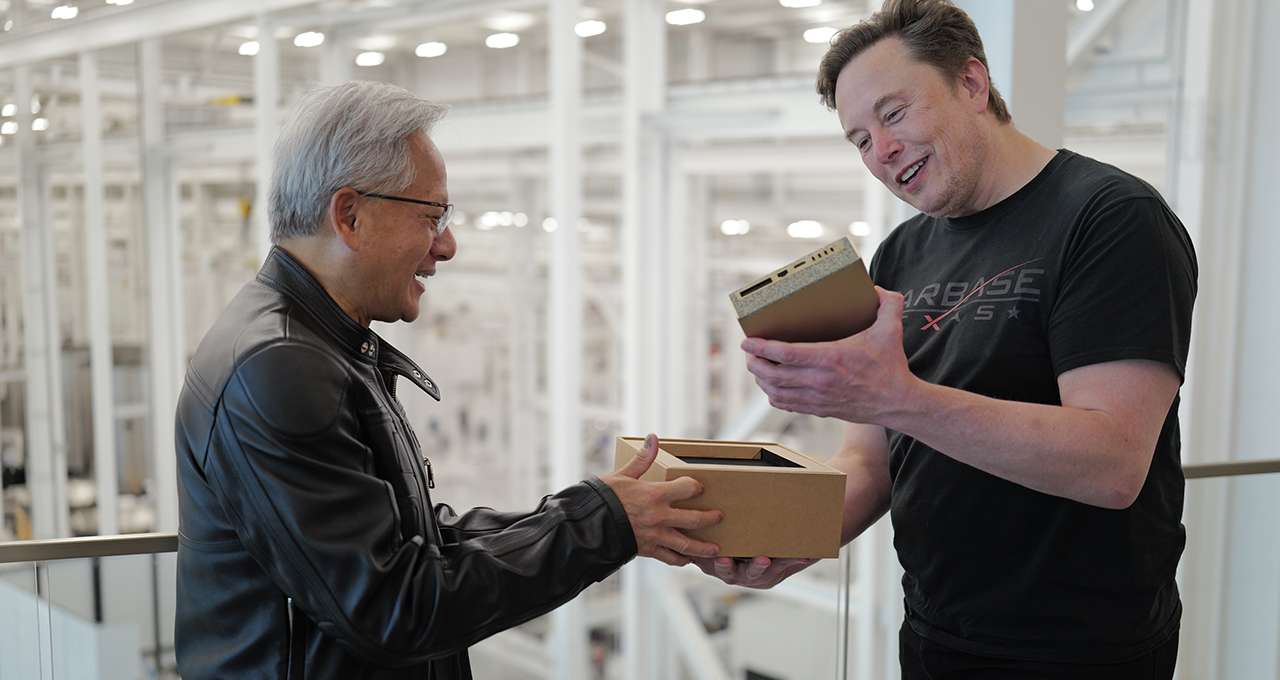

News
SpaceX Starship rocket catches fire during third Raptor engine test
SpaceX appears to have successfully fired up its fourth full-scale Starship prototype for the third time, although the Raptor engine test ended with the aft end of the ship catching fire and burning for quite some time.
Around May 7th, hours after Starship SN4 completed its second wet dress rehearsal and Raptor static fire in ~24 hours, SpaceX removed the SN18 Raptor engine it had used to support those tests, transporting it back to storage facilities a mile down the road. Three days later, SpaceX sent Raptor SN20 down the same same road and installed it on Starship SN4 – a swap made for unknown reasons.
Regardless, that swap meant that SpaceX would need to perform at least one more static fire test to prove that Starship and its new Raptor engine were getting along before the company could proceed to hop test preparations. After several days of at least 4 aborted Starship static fire attempts, SpaceX has finally managed to fuel Starship SN4 and ignite Raptor engine SN20 – but not before a new challenge cropped up.
Just shy of 1:01 pm CDT (18:01 UTC), Starship SN4 appeared to successfully fire up Raptor SN20 for at least several seconds, serving as an in-situ acceptance test for the advanced rocket engine. Like the Merlin 1D engines that power Falcon 9 boosters, Raptors are built in Hawthorne, California, shipped to McGregor, Texas for standalone acceptance testing, installed on their assigned rocket, and static fired one more time before SpaceX deems them ready for launch.
This static fire thus served to verify that Starship SN4 and Raptor SN20 were both still in good health after a busy week of numerous tests and several weeks or months in storage, respectively. If fully successful, it would likely clear Starship SN4 to attempt what would be the inaugural flight of a full-scale Starship prototype, potentially ready to occur as early as May 21st (pending an FAA license, of course). Unfortunately, when Raptor SN20 ignited, it appeared to shake or overpressurize one or several plumbing lines, catching what must have been a methane vent or drain line on fire.

While the rocket itself is likely totally fine, much like its Starhopper predecessor suffered even worse fires during its summer 2019 test campaign, the dark smoke that appeared shortly after the secondary fire started is not a great sign. As methane and oxygen burn quite cleanly, that smoke likely means that the fire(s) got to some of the extensive wiring covering Starship and connecting to its test stand and ground controllers. If damaged, all of that wiring will need to be replaced, while the leaky methane pipe that burned for a solid 15 minutes will also need to be fixed.
As such, it’s likely that Starship SN4 will need to wait at least several more days – and may even need to complete a fourth static fire test – before SpaceX can clear it for an inaugural 150m (~500 ft) hop test.

News
Tesla extends FSD Supervised ride-alongs in Europe by three months
Needless to say, it does appear that FSD fever is starting to catch in Europe.

Tesla appears to be doubling down on its European Full Self-Driving (Supervised) push, with the company extending its demo ride-along program by three months until the end of March 2026. The update seems to have been implemented due to overwhelming demand.
Needless to say, it does appear that FSD fever is starting to catch in Europe.
Extended FSD demonstrations
Tesla EU Policy and Business Development Manager Ivan Komušanac shared on LinkedIn that the company is offering ride-along experiences in Germany, France and Italy while working toward FSD (Supervised) approval in Europe.
He noted that this provides a great feedback opportunity from the general public, encouraging participants to record and share their experiences. For those unable to book in December, Komušanac teased more slots as “Christmas presents.”
Tesla watcher Sawyer Merritt highlighted the extension on X, stating that dates now run from December 1, 2025, to March 31, 2026, in multiple cities including Stuttgart-Weinstadt, Frankfurt and Düsseldorf in Germany. This suggests that the FSD ride-along program in Europe has officially been extended until the end of the first quarter of 2026.
Building momentum for European approval
Replies to Merritt’s posts buzzed with excitement, with users like @AuzyMale noting that Cologne and Düsseldorf are already fully booked. This sentiment was echoed by numerous other Tesla enthusiasts on social media. Calls for the program’s expansion to other European territories have also started gaining steam, with some X users suggesting Switzerland and Finland as the next locations for FSD ride-alongs.
Ultimately, the Tesla EU Policy and Business Development Manager’s post aligns with the company’s broader FSD efforts in Europe. As per recent reports, Tesla recently demonstrated FSD’s capabilities for Rome officials. Reporters from media outlets in France and Germany have also published positive reviews of FSD’s capabilities on real-world roads.
News
Tesla’s six-seat extended wheelbase Model Y L sold out for January 2026
Estimated delivery dates for new Tesla Model Y L orders now extend all the way into February 2026.

The Tesla Model Y L seems to be in high demand in China, with estimated delivery dates for new orders now extending all the way into February 2026.
This suggests that the Model Y L has been officially sold out from the rest of 2025 to January 2026.
Model Y L estimated delivery dates
The Model Y L’s updated delivery dates mark an extension from the vehicle’s previous 4-8 week estimated wait time. A detailed chart shared by Tesla data tracker @Tslachan on X shows the progressions of the Model Y L’s estimated delivery dates since its launch earlier this year.
Following its launch in September, the vehicle was given an initial October 2025 estimated delivery date. The wait times for the vehicle were continually updated over the years, until the middle of November, when the Model Y L had an estimated delivery date of 4-8 weeks. This remained until now, when Tesla China simply listed February 2026 as the estimated delivery date for new Model Y L orders.
Model Y demand in China
Tesla Model Y demand in China seems to be very healthy, even beyond the Model Y L. New delivery dates show the company has already sold out its allocation of the all-electric crossover for 2025. The Model Y has been the most popular vehicle in the world in both of the last two years, outpacing incredibly popular vehicles like the Toyota RAV4. In China, the EV market is substantially more saturated, with more competitors than in any other market.
Tesla has been particularly kind to the Chinese market, as it has launched trim levels for the Model Y in the country that are not available anywhere else, such as the Model Y L. Demand has been strong for the Model Y in China, with the vehicle ranking among the country’s top 5 New Energy Vehicles. Interestingly enough, vehicles that beat the Model Y in volume like the BYD Seagull are notably more affordable. Compared to vehicles that are comparably priced, the Model Y remains a strong seller in China.
Elon Musk
NVIDIA CEO Jensen Huang commends Tesla’s Elon Musk for early belief
“And when I announced DGX-1, nobody in the world wanted it. I had no purchase orders, not one. Nobody wanted to buy it. Nobody wanted to be part of it, except for Elon.”

NVIDIA CEO Jensen Huang appeared on the Joe Rogan Experience podcast on Wednesday and commended Tesla CEO Elon Musk for his early belief in what is now the most valuable company in the world.
Huang and Musk are widely regarded as two of the greatest tech entrepreneurs of the modern era, with the two working in conjunction as NVIDIA’s chips are present in Tesla vehicles, particularly utilized for self-driving technology and data collection.
Nvidia CEO Jensen Huang regrets not investing more in Elon Musk’s xAI
Both CEOs defied all odds and created companies from virtually nothing. Musk joined Tesla in the early 2000s before the company had even established any plans to build a vehicle. Jensen created NVIDIA in the booth of a Denny’s restaurant, which has been memorialized with a plaque.
On the JRE episode, Rogan asked about Jensen’s relationship with Elon, to which the NVIDIA CEO said that Musk was there when nobody else was:
“I was lucky because I had known Elon Musk, and I helped him build the first computer for Model 3, the Model S, and when he wanted to start working on an autonomous vehicle. I helped him build the computer that went into the Model S AV system, his full self-driving system. We were basically the FSD computer version 1, and so we were already working together.
And when I announced DGX-1, nobody in the world wanted it. I had no purchase orders, not one. Nobody wanted to buy it. Nobody wanted to be part of it, except for Elon.
He goes ‘You know what, I have a company that could really use this.’ I said, Wow, my first customer. And he goes, it’s an AI company, and it’s a nonprofit and and we could really use one of these supercomputers. I boxed one up, I drove it up to San Francisco, and I delivered it to the Elon in 2016.”
The first DGX-1 AI supercomputer was delivered personally to Musk when he was with OpenAI, which provided crucial early compute power for AI research, accelerating breakthroughs in machine learning that underpin modern tools like ChatGPT.
Tesla’s Nvidia purchases could reach $4 billion this year: Musk
The long-term alliance between NVIDIA and Tesla has driven over $2 trillion in the company’s market value since 2016.








